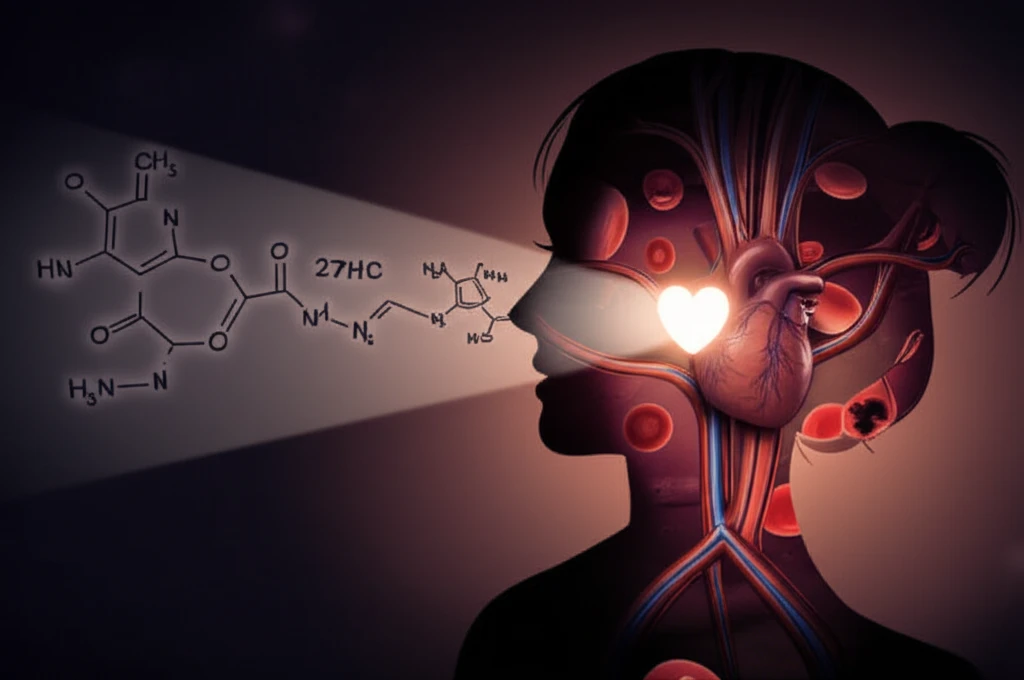
Estrogen's Hidden Foe: How a Cholesterol Molecule May Sabotage Heart Health in Postmenopausal Women
"New research reveals how 27-hydroxycholesterol (27HC) can counteract the protective effects of estrogen, potentially increasing cardiovascular risk after menopause."
For years, scientists have observed a stark contrast in cardiovascular health between pre- and postmenopausal women. Before menopause, women enjoy a lower risk of heart disease compared to men of the same age. However, this advantage diminishes after menopause, coinciding with a significant drop in estrogen levels. This decline has long been suspected as a key contributor to the increased cardiovascular risk, prompting research into how estrogen protects the heart.
Estrogen's protective effects are partly attributed to estrogen receptors (ERs) found on various cells throughout the body, including platelets. These receptors allow estrogen to influence platelet function, potentially reducing the risk of blood clot formation. However, the picture is complicated by the presence of other molecules that can interact with these same estrogen receptors, either enhancing or hindering estrogen's effects.
One such molecule is 27-hydroxycholesterol (27HC), a byproduct of cholesterol metabolism. 27HC is a known ligand for ERs, meaning it can bind to these receptors. Unlike estrogen, 27HC has been shown to block both the genomic and non-genomic actions of E2, leading some scientist to believe that 27HC could block the natural effect of estrogen to function and do its job.
The 27HC Factor: Blocking Estrogen's Protective Action

Recent research has shed light on how 27HC may undermine estrogen's beneficial effects on platelet function. A new study published in Rev Med Chile investigated the impact of 27HC on platelets from postmenopausal women. The researchers focused on platelet aggregation, a crucial step in blood clot formation. They found that while estrogen effectively inhibited platelet aggregation, this effect was significantly reversed in the presence of 27HC.
- Estrogen (E2) significantly inhibited collagen-stimulated platelet aggregation.
- The inhibitory effect of E2 was reversed when platelets were pre-incubated with 27HC.
- 27HC appeared to counteract the anti-aggregatory effects of estrogen, suggesting it acts as an estrogen antagonist in platelets.
Implications and Future Directions
This research provides valuable insights into the complex interplay between estrogen, cholesterol, and cardiovascular health in postmenopausal women. By demonstrating 27HC's ability to counteract estrogen's protective effects on platelets, the study identifies a potential therapeutic target for reducing cardiovascular risk in this population.
While the study used pharmacologic values of 27HC, future research needs to investigate the precise physiological levels of 27HC within platelets and their impact on estrogen signaling. This could involve exploring ways to modulate 27HC production or its interaction with estrogen receptors in platelets.
Ultimately, understanding the role of 27HC in cardiovascular disease could pave the way for new preventative strategies, such as targeted dietary interventions or pharmacological approaches, to help postmenopausal women maintain optimal heart health.
